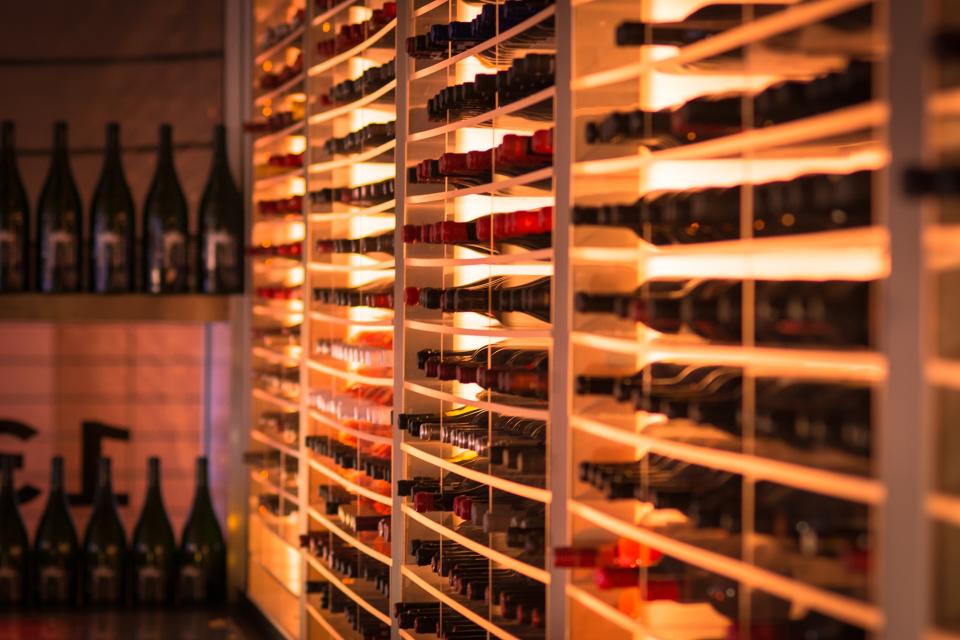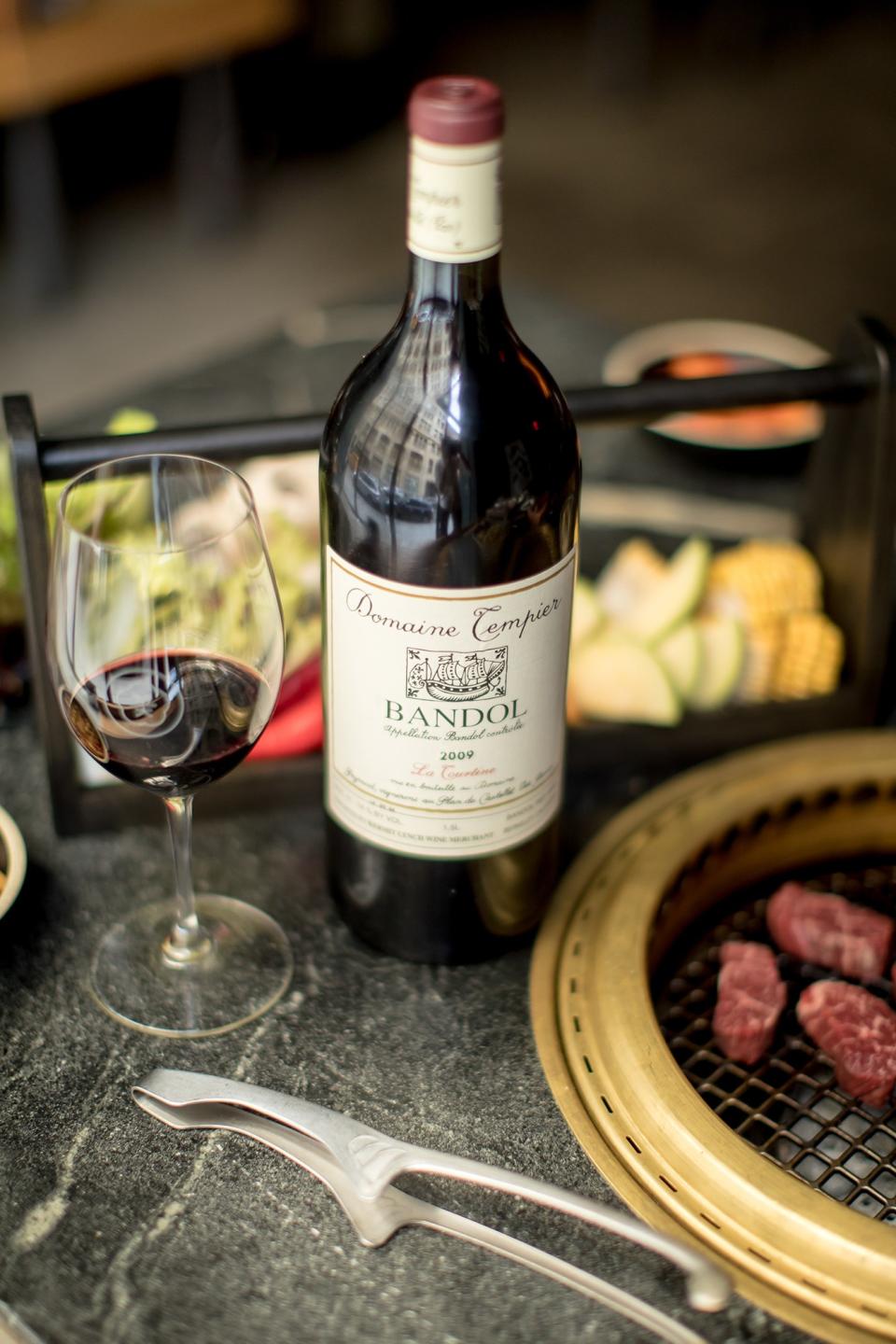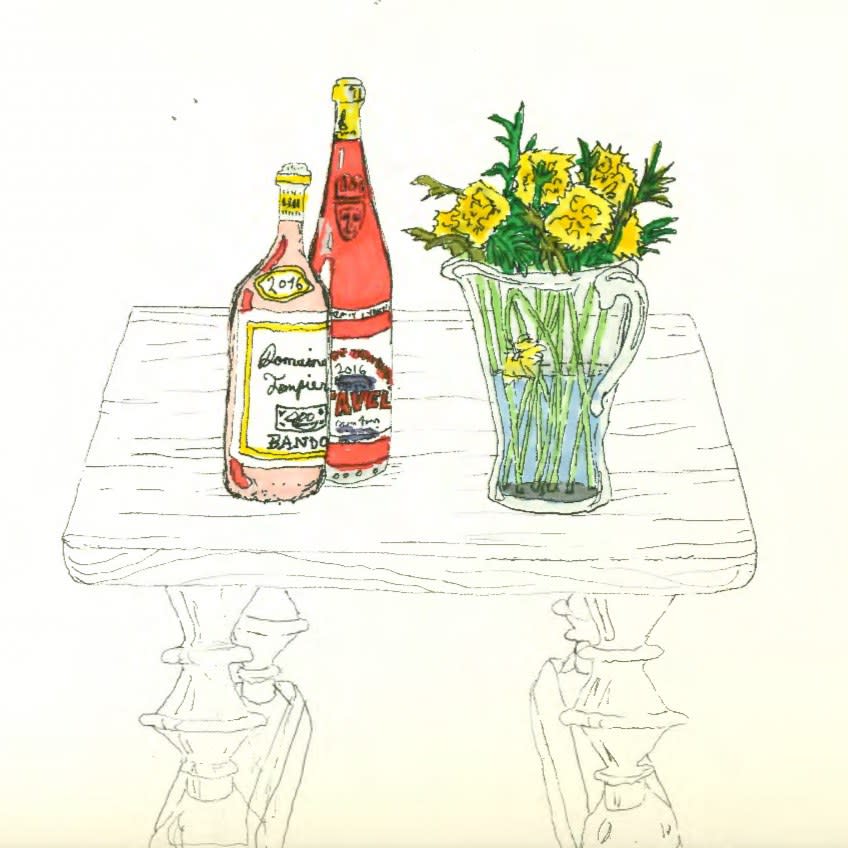The Best Wine for Every Thanksgiving Scenario
Picking wines for Thanksgiving is never an easy task. How do you choose something that will go nicely with sweet potatoes, cranberry sauces, turkey, stuffing, and the whole medley of other dishes that end up at the Thanksgiving feast? And, on top of that, how do you please everyone at the table, from your weird aunt Susan (who only likes Chardonnay) to your cousin who claims to only drink funky, natural wines? It’s a tough equation no matter how you cut it, even for the most expert of wine enthusiasts.
With a long day of socializing, eating, and drinking ahead, it’s best to go into it with a game plan for your wines. Here, some of New York City’s most talented sommeliers, including Victoria James, beverage director of Cote (and author of Drink Pink) and Morgan Harris, head sommelier of Aureole, offer up their expert suggestions for the best wines with turkey dinner and every Thanksgiving scenario.

If you are eating with friends . . .
Victoria James: For Friendsgiving, the perfect wine that pairs well with everything is rosé. Not just for the summer months, the versatility of the beverage shines in a meal with so many flavors. The slight tannin that comes from contact with the skins lends some structure, whereas the high acidity cuts through the richness of those fuller dishes. Look for examples from Corsica like Yves Leccia or Domaine Abbatucci. Plus, what could be more fun than rosé?
Morgan Harris: I always like to bring something new to share with good friends. Your friendships are cemented, so take a risk and try something you might not have had before and share the adventure with your fellow drinkers. Love it or hate it, it’ll be fun to share the experience together with people you already know and jive with. Try unusual varieties, regions, or countries that you might not be familiar with and see where it takes you.

If you are meeting your significant other’s parents for the first time . . .
VJ: Don’t overthink this one. Most people would bring a wine that is unabashedly fancy (think pricey Bordeaux or Burgundy) to try and impress, but that is never the right move. Instead, go with something that is well crafted, humble yet delicious. A favorite here is Bandol Rouge: gripping tannins, dark forest fruit, and exceptional with a platter of dishes. In the South of France, they serve this just a tiny bit chilled, and it goes with everything from fish to poultry to hearty game. Look for producers like Domaine Tempier, Domaine du Gros ’Noré, or Domaine Terrebrune.
MH: To me, the spend and the sentiment is always the best motivator here. Always try to ask ahead about what Mom and Dad enjoy drinking, but I find that Champagne always loosens up any occasion. The best values are generally to be found in smaller brands rather than the big name brand producers. I adore vintage Champagne from the larger houses, but they’re expensive. You’ll often be better served by looking towards smaller-production Champagne houses that take a more artisanal approach. Ask your shop’s staff what they like, and you’re likely to be steered in the right direction, but remember, accept no substitutes for the real thing. As hard as they try, prosecco and Cava will never be Champagne proper.
If you are dining with people who seem to know a lot about wine and you need to be impressive, but don’t want to break the bank. . .
VJ: Go with a throwback classic. Chianti is having a comeback moment and some great producers are starting to release library wines. Great offerings from wineries like Villa di Geggiano, Castagnoli, and Fontodi can hold up to even the biggest and priciest wines.
MH: To me, one of the best value “prestige” wines is Bordeaux. It’s classic. It’s French. It sounds expensive but there’s still a ton of value to be found in the region. Read: if you’re willing to spend $30 to $50 a bottle, you can often get something that really over-performs, often with a few years of bottle development. As always, consult the people who work at your local retail shop for the best values.
If you are eating with extended family . . .
VJ: Want to make the whole gang happy? Go with Champagne. No other wine can boast such happiness and versatility in a bottle. A good blanc de blancs from producers like Doyard, Veuve Fourny, and J.Lassalle is affordable and delicious. Have a really big family? Go for a magnum (two bottles in one!). They are inherently impressive and also keep wine younger and fresher. Since there is less overall exposure to the effects of oxygen (through the cork), the aging process of wine in a magnum takes around one and a half times longer than in a 0.75-liter bottle. Keep it fresh!
MH: Family is always a little difficult, but for me, you can take two approaches depending on whatever family problems you’re looking to mitigate. Is it conflict, or your own boredom? You can do lower-alcohol white, like German Riesling, Muscadet from the Loire Valley, or Chablis to keep everyone low-key, or you can turn into the torpedo and do a massive red like domestic Zinfandel, Châteauneuf-du-Pape from southwest France, or amarone from the Veneto in Italy if you really want to get everyone a little wasted.
If you are having a nontraditional Thanksgiving feast (with flavors beyond turkey and gravy) . . .
VJ: At Cote I am constantly trying to pair wine with nontraditional Korean cuisine; think spicy, fermented, and sour flavors. The wine that goes best with all of these dishes is something with a little bit of residual sugar, some texture, and good acidity. My favorite is a Bugey-Cerdon from Renardat-Fâche, budget-friendly and the perfect wine to beat intense and unique flavors. If you prefer something drier, go with an awesome Lambrusco, like Fattoria Moretto’s Lambrusco Grasparossa di Castelvetro Secco, a gripping red with some fizz and a punch.
MH: For whites, Gruner Veltliner from Austria is the perfect savory food–based white when you don’t know exactly what you’re eating. It pairs flexibly with all sorts of difficult vegetables, fermented or vinegary foods, and really is a successful “goldilocks” wine for many occasions. If you’re a red drinker, something light, fresh, and easygoing is the best way to steer around spicy foods or exotic flavors. Beaujolais or Cabernet Franc from the Loire Valley are top contenders for me, but lighter, more easygoing fruity reds regardless.
For the cousin who likes weird wines . . .
VJ: Ah, orange wine. The fellow everyone forgets about at times like these. Rosé’s long-lost friend. For the adventurous drinker, go with this white wine that was left in contact with its skins. Zidarich’s Vitovska from Friuli in Italy by the Slovenian border has just a bit of that funk and weirdness but is still approachable, so Grandma won’t throw a fit.
If you’re not sure they like wine . . .
VJ: Think wine, but cooler . . . Ramona Wine Cooler is a stellar alternative to the traditional bottle of wine. Bottled in a can and made from organic Zibbibo grapes from Sicily, a bit of grapefruit is added at the end to make it super easy-drinking and tad lower in alcohol. For the lovers of Bellinis, mimosas, and the not-so-traditional bottle of wine, this is your go-to.
If you are still waiting for the guests to arrive . . .
MH: Treat yourself! You’re the one cooking everything, so splurge on whatever you like best. My mother, my sister, and I do most of the cooking for big holidays and it’s invariably a few bottles of champagne along the way: refreshing, complex, and always feels like a treat.
To serve with desserts . . .
MH: Sauternes, the naturally sweet dessert wine of Bordeaux, is really one of the world’s greatest dessert wine values for me. You need whatever you’re drinking to be slightly sweeter than whatever you’re eating, so having the sweet-and-sour pop of Sauternes is perfect. These wines merge savory and fruity flavors perfectly, with a mix of heady saffron and ginger flavors mixing with ripe, lush stone fruit. Madiera, the Portuguese fortified wine, is also spectacular with the nutty, spiced, and caramel flavors that are so common in Thanksgiving desserts. Both of these would be wonderful options for a dessert pairing, and great opportunity for a side-by-side tasting!
To help digest after all that food . . .
VJ: You will be there hero of Thanksgiving. Once all that red, white, rosé, and sparkling wine is polished off, enter vermouth. Slightly bitter and quite herbaceous, it is the perfect way to end a meal jam-packed with flavors. Bèrto Ross da Travaj (aka red vermouth) is not just for cocktails, it’s the perfect post-dinner sipper. Into something a bit more intense? Cardamaro is a wine-based digestif/aperitif that is slightly more bitter, some of the main macerated ingredients include cardoon and blessed thistle (both in the artichoke family so it’s kinda like you're having vegetables for dessert, another win).


